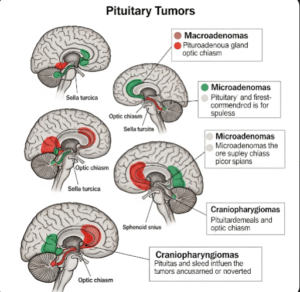Overview
Stuttering is a speech disorder characterized by frequent disruptions in the flow of speech, such as repetitions, prolongations, or involuntary pauses. It typically begins in childhood and may persist into adulthood if not treated early. In Korea, stuttering is increasingly recognized as a treatable condition, with growing access to speech-language therapy, psychological support, and specialized clinics for both children and adults.
What is Stuttering?
Stuttering—also known as stammering—is a communication disorder involving involuntary disruptions in the rhythm or fluency of speech. These disruptions can include:
- Repeating sounds, syllables, or words (e.g., “I-I-I want…”)
- Prolonging sounds (e.g., “Mmmmmilk”)
- Sudden speech blocks or pauses
Stuttering is not due to lack of intelligence or nervousness, although anxiety can worsen the condition. It is classified as a neurodevelopmental disorder of speech fluency and may be developmental, neurogenic, or psychogenic in origin.
In Korea, public awareness of stuttering is gradually increasing, and early speech intervention is widely encouraged in schools and pediatric care.
Symptoms
Common symptoms of stuttering include:
- Repetitions of sounds, syllables, or whole words
- Prolongation of speech sounds
- Speech blocks—where the mouth is positioned to speak but no sound comes out
- Facial tension or muscle strain while speaking
- Rapid eye blinking or lip tremors during speech
- Avoidance of certain words or speaking situations
The severity may vary based on context—such as increased stress, speaking on the phone, or public speaking.
Causes
The exact cause of stuttering is not fully understood, but factors may include:
- Genetics: Stuttering often runs in families
- Neurological differences: Subtle differences in brain activity affecting speech motor control
- Developmental delays: Especially in children with language or speech delays
- Psychological stress: May trigger or worsen stuttering, though not a root cause
- Brain injury (rare): Stroke or trauma can lead to neurogenic stuttering
Risk Factors
Certain risk factors may increase the chance of developing or continuing to stutter:
- Family history of stuttering
- Male gender (more common in boys)
- Early childhood speech or language disorders
- High levels of family stress or pressure
- Late onset of stuttering (after age 5)
Complications
If left unmanaged, stuttering can lead to:
- Low self-esteem or social anxiety
- Avoidance of speaking situations (school, work, relationships)
- Academic or career limitations
- Depression or emotional stress
- Negative social stigma, especially in competitive or high-pressure environments
Prevention
While stuttering cannot always be prevented, early intervention and supportive environments can reduce its severity:
- Encourage relaxed, non-judgmental communication at home
- Avoid interrupting or correcting the child’s speech excessively
- Seek speech therapy early if stuttering persists beyond age 4
- Build confidence through positive reinforcement
- Reduce environmental stress and time pressure during conversation
Treatment Options in Korea
Korea offers comprehensive stuttering treatment through speech-language pathology clinics, university hospitals, and developmental therapy centers.
Diagnosis
- Speech-language evaluation: Conducted by certified speech therapists
- Developmental assessments: In children to identify coexisting delays
- Psychological screening: To assess anxiety, stress, or social phobia
Medical Treatments
While there is no medication to cure stuttering, treatment may involve:
- Speech therapy: Core treatment, focusing on fluency shaping and stuttering modification
- Parent-child interaction therapy: Encouraging positive speech habits at home
- Group therapy: Practicing fluency in social settings
- Cognitive Behavioral Therapy (CBT): For anxiety or avoidance behavior
- Breathing and pacing techniques: To improve control over speech rhythm
In Korea, speech therapy is widely available at pediatric and ENT clinics, and increasingly supported in public schools for children with developmental needs.
Surgical or Advanced Therapies
- No surgical treatment exists for stuttering
- Digital fluency devices or apps: Some Korean clinics use delayed auditory feedback (DAF) or frequency-altered feedback (FAF) devices to assist fluency
Rehabilitation and Support
- Long-term speech therapy plans: Especially for adolescents and adults
- Psychological counseling: To address associated mental health issues
- Support groups: Community and online platforms (including Korean-language forums) offer shared coping strategies
- Vocational training: For adults affected in the workplace













